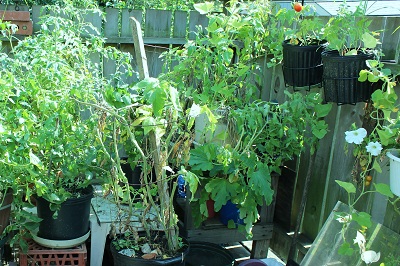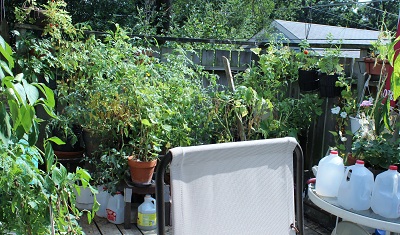
Caption
It doesn’t take much to create a healing garden. Russ Wolters gathered used pots, hangers and seedlings to start his.
Photo Credit
Doreen G. Howard
Excellent site you’ve got here. It’s difficult to find high-quality writing like yours nowadays. I seriously appreciate individuals like you! Take care!
I love this idea. As a rehab therapist, patients tell me heartbreaking stories about how they had to give up gardening or give away their beautiful plants due to not being able to physically care for them (stroke, arthritis, joint replacements, etc). I hope you can posts more articles like this to enable our population that's not as mobile as they used to be.
03-28-2020 Saturday Greetings -- The article about Russ and his healing garden was our first read of the morning, and we wanted to wave back to him. Great article. Best wishes for more lovely days tending, Russ.
I have small patio and area of garden 18' x 22' . Due to severe balance problems have pots galore! Plus 2 very small corner flower beds.
Put down patch of artificial grass and planted beds with roses, jasmine, grasses, lavender etc just purchase dwarf weeping willow and
Very large contain. Need to see trees which depth of soil in yard will not to plant, so praying my container willow is happy.
I am in Yorkshire, Great Britain so weather variable. Really enjoy reading your comments and great advice. As I say the body's falling to
pieces but the minds still working.
Thank you Ms. Howard! I had a stroke 2yrs ago and also have mobility challenges. I was talking with my parents just this evening about the gardens they had over the years. I remember when my son was a toddler he'd make his way out to the garden,HARVEST WHAT EVER DAD PLANTED and sit down in the middle of the garden to a feast.(we never figured how he got out of the house) What a wonderful memory. I decided I will plant my healing garden this year. Happy gardening cousin Russ!!
LeoD, congrats on your positive attitude, and I wish you bountiful harvests and gorgeous flowers. I remember stealing green beans off plants and eating them in the garden as a young girl. My Dad found me one day and showed me how to wash the beans with the garden hose before I ate them. I progressed to stealing peas and Bell peppers!
My dad also gardens from his power chair. Since he lost the use of his legs, he now gardens from pots he has lined up in his garden. He is also 86 years old. Keep up the good work Russ!
My cousin Russ is overwhelmed with all your messages of support and understanding. We gardeners always find a way to grow, don't we? And, the process is soothing and healing. Good luck everyone, and enjoy!
Patio gardening is lots of work and fun to. It products alot of good tomatoes and cucumbers. I know from experience from living in apartment. I love to dig in dirt in pots. I can stand very long and use a walker to get around.
God Bless and enjoy your gardening.
I AM ALSO LIMITED TO STANDING AND BENDING IN ORDER TO PLANT AND ENJOY GARDENING. I HAVE A WALKER AND LIVE IN AN APARTMENT WITH A PATIO AND SMALL YARD. MAY YOU ENJOY AND MAY GOD BLESS.
- « Previous
- 1
- 2
- …
- 10
- Next »












Comments